Exclusive Neuroject Article: The need to move toward sustainable, energy-efficient solutions has never been more urgent due to the world’s ongoing energy crises and rising concerns about climate change. In the field of green architecture, zero energy buildings have become a ground-breaking and paradigm-shifting concept. These structures are made to produce as much energy as they use, so completely eradicating their carbon footprint and having a negligible influence on the environment.
Higher energy use is required to maintain internal thermal quality as a result of rising outside temperatures, with zero energy buildings becoming an alternative and even a legal requirement in some nations.
The principles, design approaches, and cutting-edge technology of zero energy buildings are explored in this comprehensive guide. Zero energy buildings provide a promising route to a cleaner, greener future by incorporating renewable energy sources, cutting-edge HVAC systems, energy monitoring technologies, and more. We will look at real-world case studies, study the financial incentives and governmental support that encourage zero-energy building adoption, and investigate the difficulties and opportunities that lie ahead in this revolutionary path toward sustainable construction throughout this book.
Table of Contents
Introduction to Zero Energy Buildings (ZEB)
Zero Energy Buildings are a revolutionary method of environmentally friendly construction that takes climate change, energy use, and other pressing issues into account. The reliance on non-renewable sources is significantly decreased because of these ground-breaking structures, which annually produce as much renewable energy as they consume. Zero energy buildings combine energy-efficient design principles with renewable energy systems, yielding several long-term advantages like environmental protection, financial savings, resilience, and improved energy security.
Through zero energy buildings, initiatives to reduce the use of non-renewable energy in the building industry gain traction. These buildings use renewable energy sources to both meet their own energy demands and reduce energy demand through efficient design, reduced plug loads, and conservation efforts.
The enormous potential impact of zero energy buildings on energy consumption patterns is demonstrated by the growing interest from private commercial property owners attempting to balance commercial goals with sustainability objectives. The discipline of civil engineering looks into modifying buildings for shifting climatic conditions in response to the growing need to reduce the consequences of climate change. Making sure that the implementation costs of energy-saving measures remain affordable in comparison to energy consumption costs depends critically on the efficiency of a building’s design.
In order to mitigate the magnified effects of climate change, a Zero Energy Building goes beyond energy efficiency and establishes itself as a key participant in urban energy planning. The need for sustainable architecture is becoming more pressing as the world struggles with an overwhelming energy problem brought on by rising demand, depleting fossil fuels, and environmental worries related to greenhouse gas emissions.
Sustainable buildings, especially zero energy buildings, shine as rays of hope since they are built to run with little need for energy and reliance on renewable sources. These structures significantly reduce carbon footprints and fossil fuel usage by incorporating energy-efficient design concepts, cutting-edge technology, and renewable energy. Beyond easing the energy crisis, the ripple effect also includes energy security, environmental protection, and the improvement of living and working conditions.
A thorough guide is a guiding light for information about zero energy buildings and their crucial part in the world’s energy and climate concerns. It places a focus on achieving net-zero energy consumption, which is accomplished by producing as much energy as is used during a certain time. The manual provides a blueprint for environmentally friendly construction and energy-efficient design by encapsulating principles, technology, and architectural methods.
The guide fosters sustainable habits, which promote environmental preservation and lower carbon emissions, by encouraging a deeper awareness of zero energy buildings. Its scope encompasses a range of zero-energy building-related issues, including cutting-edge HVAC and lighting systems, financial incentives, energy monitoring, and energy-efficient building designs. Case studies from the real world demonstrate the viability and potential benefits of zero-energy building adoption, providing a striking vision of a more sustainable future.
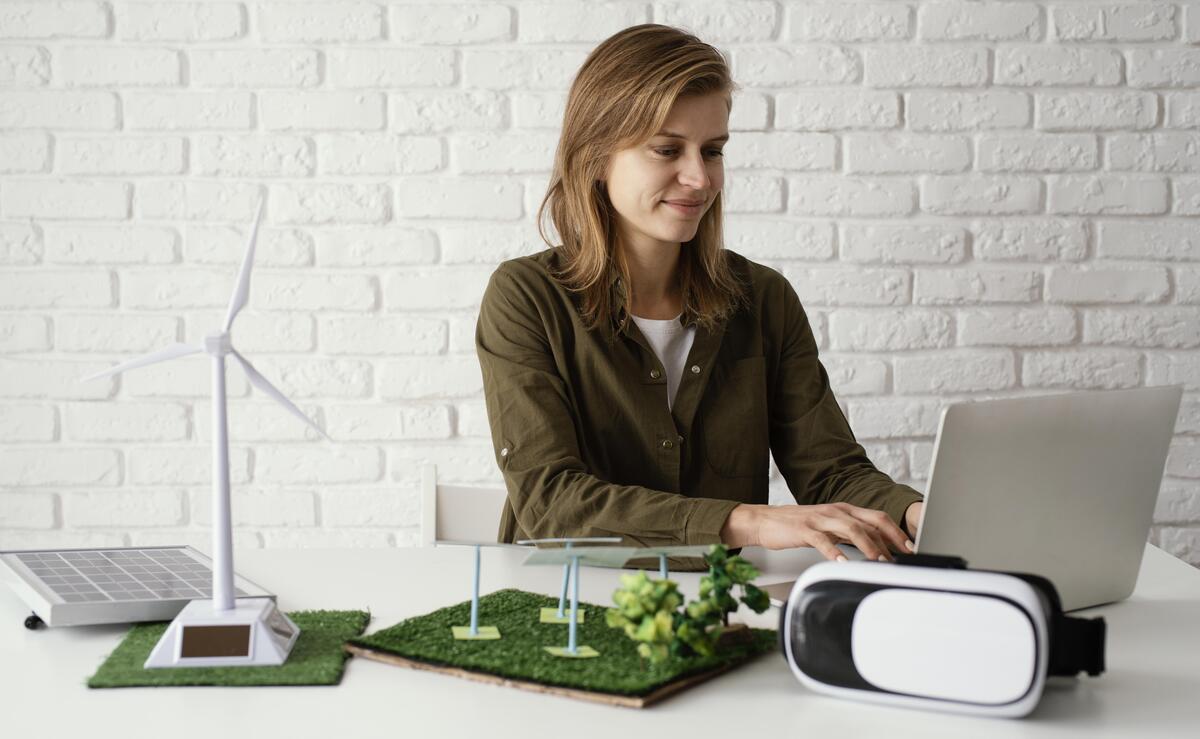
Energy Efficiency in Building Design
A key factor in lowering energy use, greenhouse gas emissions, and operating costs while raising occupant comfort and well-being is energy-efficient building design. Adopting energy-efficient building design techniques is crucial as the world deals with escalating environmental issues and energy demands. The fundamental concepts, passive design methods, energy modeling software, ideal building orientation, and high-performance building envelope materials are all covered in this part.
Principles of Energy-Efficient Building Design
Minimizing energy use and optimizing the use of renewable energy sources are the cornerstones of energy-efficient building design. Important ideas include:
Insulation: The need for artificial heating and cooling is decreased because efficient insulation lowers the amount of heat transmission between a building’s interior and exterior.
Air Sealing: Air leakage, which can result in energy losses and lowered indoor air quality, is prevented by proper air sealing. It entails caulking openings, joints, and cracks in the building envelope.
High-performance Windows: Multiple panes and low-emissivity coatings on energy-efficient windows allow for ample natural light without sacrificing thermal comfort while reducing heat gain or loss.
Optimal Lighting: Electricity consumption for lighting is considerably decreased by using LED lighting, daylighting techniques, and lighting controls.
Appliance and Equipment Efficiency: The choice of energy-efficient appliances and equipment aids in lowering the building’s overall energy requirement.
Passive Design Strategies and Techniques
Without significantly depending on mechanical systems, passive design solutions use natural components to produce comfortable indoor spaces. These tactics consist of:
Construction Orientation: orienting the structure to receive as much sunlight as possible in the winter (to capture passive solar heat) and as little as possible in the summer (to lower cooling loads).
Organic Ventilation: designing the structure to promote fresh air circulation without the use of mechanical ventilation by allowing for cross-ventilation and the stack effect.
Overhangs and Shading: Reduce cooling requirements by strategically placing shade structures and overhangs to block direct sunlight during the hottest parts of the day.
Heat Transfer: By storing and releasing heat slowly, high thermal mass materials (such as concrete and stone) may stabilize the temperature within buildings.
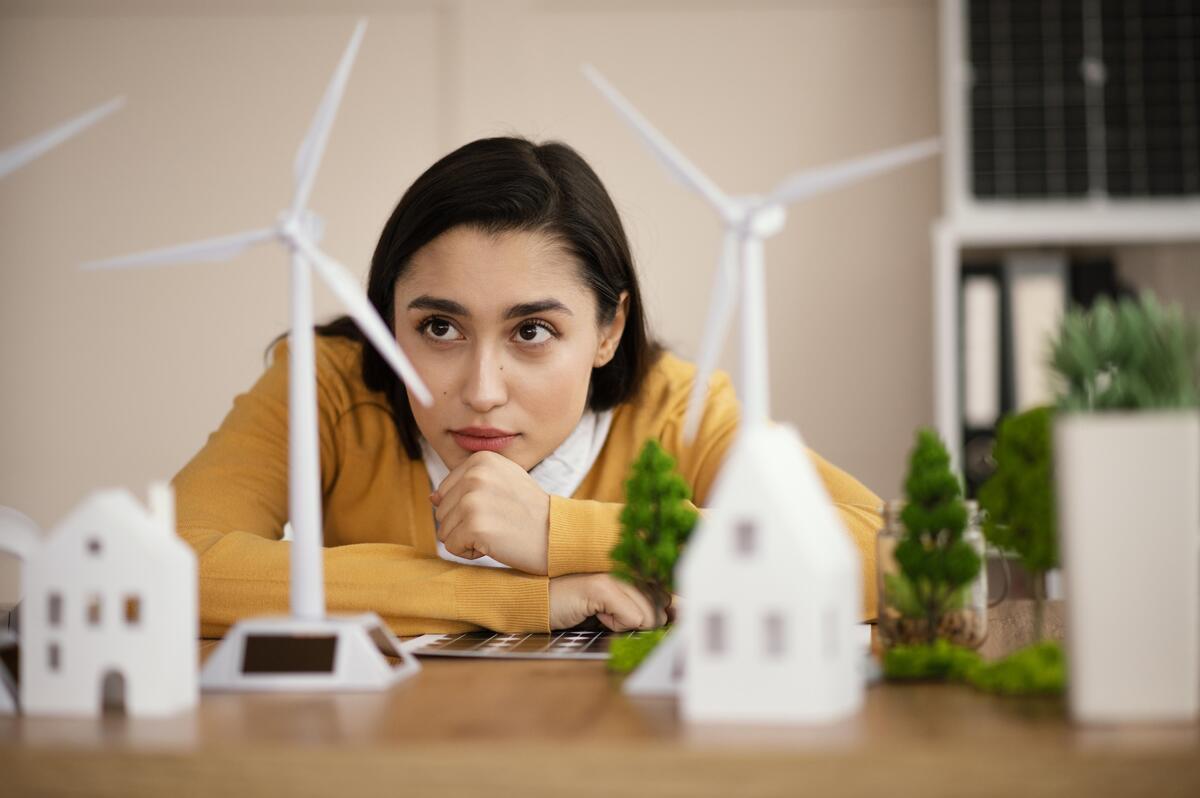
Energy Modeling and Simulation Tools
Before a building is built, its energy performance must be evaluated using energy modeling and simulation technologies. These tools give designers the ability to maximize various design components for energy efficiency. Typical simulation programs include:
EnergyPlus: A sophisticated energy simulation program that mimics building energy and environmental systems was created by the US Department of Energy.
DesignBuilder: A user-friendly piece of software that makes it possible to create digital models of buildings and run energy calculations.
eQUEST: A commonly used and cost-free program for analyzing and simulating building energy.
Optimal Building Orientation and Site Selection
The energy efficiency of a structure is greatly influenced by site selection and ideal building orientation. Considerable factors include:
Solar Access: Putting the building in the best possible position to take advantage of passive solar heating while limiting direct solar exposure during the hotter months.
Prevailing Winds: Natural ventilation and cooling can be facilitated by orienting the building to coincide with the direction of the wind.
Land Topography: Enhancing energy efficiency and attractiveness can be accomplished by making use of natural slopes and landscape elements.
High-performance building envelope materials and technologies
The walls, roofs, windows, and doors that make up a building’s envelope are crucial in controlling heat flow and preserving internal comfort. Technologies and materials for high-performance envelopes include:
Insulated Concrete Forms (ICFs): ICFs provide higher structural strength and insulation qualities, which lower energy use and improve thermal comfort.
Vacuum Insulated Panels (VIPs): VIPs offer excellent levels of thermal resistance in thin profiles, allowing for more insulated, thinner walls.
Phase Change Materials (PCMs): PCMs stabilize indoor temperatures and lower heating and cooling loads by storing and releasing latent heat during phase transitions.
Sustainable Roofing: In addition to lowering cooling requirements and fostering biodiversity, green and cool roofs lessen the impact of the urban heat island.
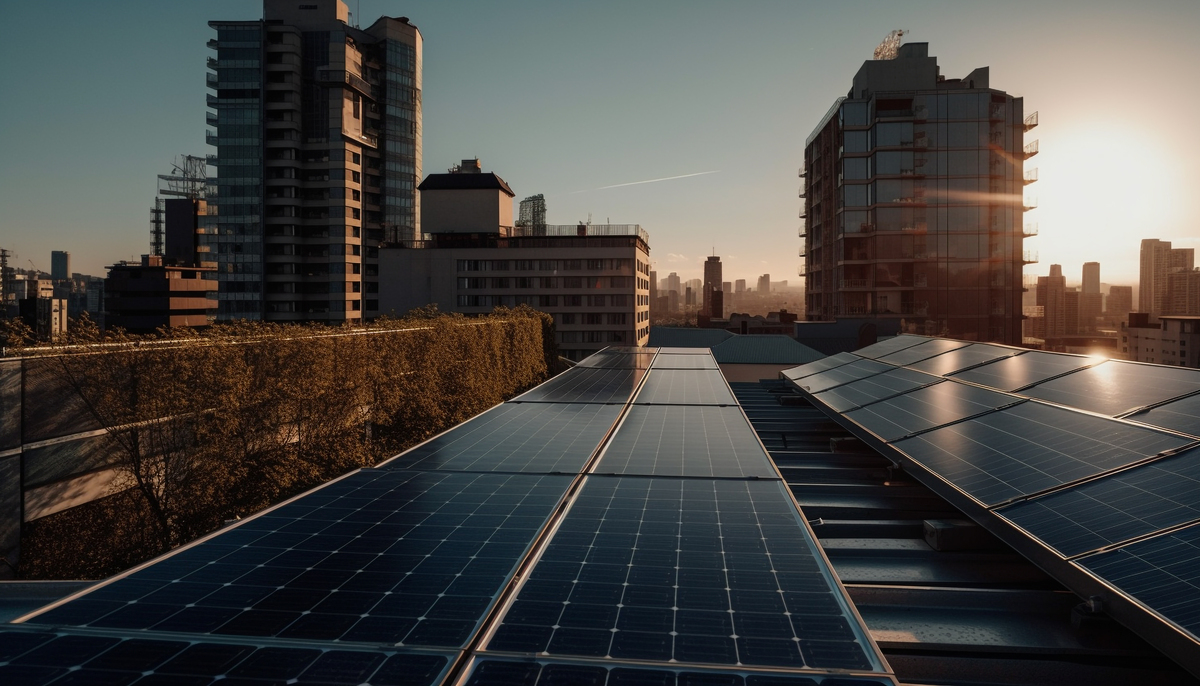
Renewable Energy Integration
Zero Energy Buildings (ZEBs) are critical in the effort to create a sustainable future and combat climate change since they produce as much energy as they use over a specific time frame. The efficient integration of renewable energy sources is a crucial component of achieving this net-zero energy balance.
Solar Power Systems for ZEBs: Photovoltaic (PV) Panels and Solar Thermal
One of the most well-known and experienced renewable energy sources employed in zero energy buildings is solar electricity. Solar thermal systems use solar energy to heat water and spaces while photovoltaic (PV) panels use sunlight to generate electricity. Depending on the form of the building and its energy requirements, PV panels can be integrated into building facades, rooftops, or as independent installations. Heat pumps are frequently used in conjunction with solar thermal collectors to provide room heating and cooling.
Numerous advantages of solar power integration for zero energy buildings include low operating costs, carbon neutrality, and less reliance on the grid. Energy storage solutions must be included, nevertheless, due to the intermittent nature of solar energy, to ensure energy availability when the sun isn’t shining.
Wind Energy and Small-Scale Wind Turbines
Another valuable renewable energy source appropriate for zero energy buildings is wind energy, especially in areas with good wind conditions. To efficiently capture wind energy, small-scale wind turbines, commonly referred to as micro-wind turbines, can be put on rooftops or near structures. These turbines can greatly contribute to a building’s energy requirements when strategically placed and interconnected.
The fact that wind patterns frequently complement solar power and offer a more reliable energy supply is one of the key benefits of integrating wind energy. Though not all sites are appropriate for the installation of wind turbines, wind energy can be site-specific. Additionally, zoning and aesthetic issues with wind turbines may arise, necessitating careful planning and community involvement.
Geothermal Energy and Ground-Source Heat Pumps (GSHPs)
Buildings can be heated, cooled, and have hot water provided using geothermal energy, which uses the heat that the Earth’s crust stores. Zero energy buildings frequently use well-liked geothermal technology known as ground-source heat pumps (GSHPs). GSHPs effectively transmit heat between the ground and the building’s heating and cooling systems by taking advantage of the relatively constant subsurface temperature.
GSHPs are a good option for zero energy buildings because of their great energy efficiency, low operating costs, and minimum environmental impact. However, compared to traditional heating and cooling systems, the initial installation expenses may be higher.
Biomass and Bioenergy Solutions
Utilizing organic materials to generate heat and electricity, such as wood pellets, agricultural waste, and biogas, is a key component of biomass and bioenergy solutions. Zero energy buildings can incorporate biomass boilers and biogas generators to produce electricity and supply sustainable energy for heating and cooling.
The circular economy can benefit from the use of biomass systems, which can use organic waste as fuel. However, to minimize negative environmental effects and preserve a true zero-carbon footprint, sustainable sourcing and ethical management of biomass resources are essential.
Integrating Energy Storage Systems for ZEBs
Energy storage technologies are essential for zero energy buildings’ integration with renewable energy. When renewable energy production is high, they make it possible to store excess energy and provide it when it is low or nonexistent. Common energy storage technologies included in zero energy buildings include batteries, thermal storage units, and pumped hydro storage.
Energy storage makes ensuring there is always energy available, lessens reliance on the grid, and makes the most of local renewable energy production. However, the energy requirements of the structure, renewable energy sources, and pricing factors all play a role in selecting the best storage solution.
A key component of Zero Energy Buildings is the integration of renewable energy, which enables buildings to run with little reliance on non-renewable resources. Zero energy buildings are capable of producing net-zero energy and making a substantial contribution to a sustainable future by carefully integrating solar power systems, wind energy, geothermal solutions, biomass, and energy storage. But for integration to be successful, there must be careful planning, consideration of site-specific considerations, and technology developments. The move to a greener and more resilient built environment will continue to be fueled by renewable energy integration in zero energy buildings with continuing innovation and encouraging legislation.

Advanced HVAC and Lighting Systems
Depending on your region, replacing your heating and cooling equipment with more energy-efficient models can save your energy usage by 10% for gas furnace heating systems and 50% for electric heating and cooling systems.
ENERGY STAR Certified Heating and Cooling Equipment: When installed correctly, ENERGY STAR certified heating and cooling equipment can result in yearly energy bill savings of 10%–30%. Without losing features or usefulness, these products have received independent certification for energy efficiency.
Room air conditioners, central air conditioners, ductless heating and cooling, air-source heat pumps, furnaces, geothermal heat pumps, boilers, ventilation fans, smart thermostats, commercial boilers, and light commercial heating and cooling are all examples of certified heating and cooling goods. For greater energy savings, give ENERGY STAR-certified heating and cooling equipment a priority.
Consortium for Energy Efficiency (CEE) Multitier Performance Specifications: In a larger effort to identify and promote the procurement, installation, and maintenance of energy-efficient household central air conditioners, air source heat pumps, furnaces, and boilers, the Consortium for Energy Efficiency (CEE) has developed multitier performance requirements. CEE highlights three key components: common efficiency criteria (multitier performance specifications), a quality installation specification, and promotion of quality maintenance to achieve high in-field efficiency, realize savings, and remove market obstacles.
Efficiency programs can encourage manufacturers to create goods that fulfill CEE multitier performance criteria by fostering consumer desire for greater efficiency.
Air-Source Heat Pumps in Cold Climates: Recent years have seen a considerable increase in the usage of air-source heat pumps (ASHP) in cold regions; nevertheless, conventional size, selection, and installation procedures are not necessarily suitable for cold climates and have resulted in system inefficiencies and underperformance.
The Northeast Energy Efficiency Partnerships (NEEP) developed two new resources—the Guide to Sizing & Selecting ASHPs in Cold Climates and the Guide to Installing ASHPs in Cold Climates—to address this issue with funding from DOE’s Home Improvement Catalyst (HI Cat) Initiative. To help guarantee overall system function and client pleasure, these manuals offer ASHP installers straightforward instructions.
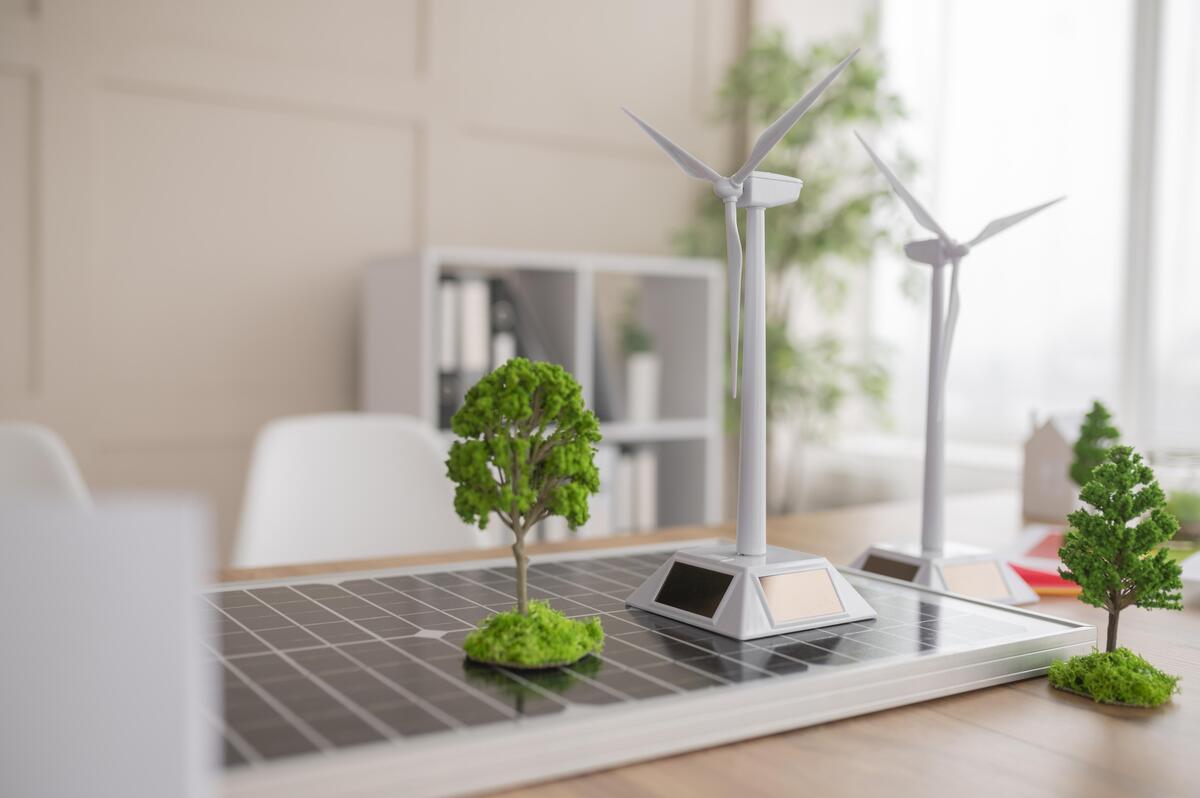
Radiant Heating and Cooling Technologies
In a radiant heating system, heated fluid is delivered throughout a space through plastic tubing that is embedded in the floors, walls, or ceilings from a warm-water source (such as a geothermal system or boiler). Heat is transferred through the tubing to the exposed surface, which functions as a sizable, soft radiator.
Radiant heating systems are defined as heated surfaces that produce more than 50% of their heat energy as infrared emissions. A heated floor allows warm air to gently rise from the floor while also radiating heat to everything in its line of sight, warming the furniture and occupants of the space. Compared to other methods of heat transmission, the comfort that results is unparalleled.
Radiant cooling systems can move cooled fluid through the same system of embedded plastic tubing that radiant heating systems often use. With the use of this network of tubes, floors, walls, and ceilings can be transformed into cooled surfaces that evenly absorb sensible* heat energy, such as radiant heat from solar gain, people, lights, computers, and other objects, as well as some convective heat transfer from the surrounding air.
Natural Ventilation and Daylight Harvesting
Daylight Harvesting: The most sophisticated yet straightforward technique to cut energy use is daylight harvesting, commonly referred to as daylight response. Based on the amount of daylight present, this automatic lighting management approach modifies the artificial light level. It works best in places with more windows or doors that let in natural light. This method increases tenant happiness while simultaneously using less energy.
The light sensors, also known as photocell sensors, measure the amount of light that is present in space during daylight harvesting. These sensors will transmit data to the controller, which will then change the level of light intensity by the data obtained.
Natural Ventilation: Without the use of mechanical systems, natural ventilation uses wind and thermal buoyancy to flow air into and out of your home to bring in fresh air. Natural ventilation can provide free cooling and lower your home’s energy use at night in the summer. Usually, natural ventilation design is taken into account when designing a home.
LED Lighting and Smart Lighting Controls
With its high energy efficiency, lengthy lifespan, and variety of applications, LED lighting has completely changed the lighting business. Compared to conventional incandescent bulbs, LEDs use less energy and have a much longer lifespan since they emit light through electroluminescence. By allowing for remote control, scheduling, and customization of lighting settings, integrating smart lighting controls amplifies these advantages.
Utilizing this synergy optimizes both energy use and user comfort. The U.S. Department of Energy claims that LEDs have a lifespan of up to 25,000 hours and use 75% less energy than incandescent bulbs. According to the DesignLights Consortium, the addition of smart controls can further reduce energy use by up to 50%.
Since the development of the lightbulb, smart lighting has been the most significant advancement in lighting. It elevates the idea of lighting our houses beyond just the utilitarian, adding a great deal of usefulness to such a significant aspect of our lives.
Building Automation and Energy Management Systems
Modern constructions can operate more efficiently and sustainably thanks to building automation and energy management technologies. These integrated solutions monitor and enhance lighting, HVAC, security, and other systems through the use of sensors, controls, and communication networks. These systems lessen waste, reduce carbon footprint, and save operational costs by dynamically changing energy demand based on occupancy and environmental conditions.
Significant progress has been made in this area, with studies by the International Journal of Sustainable Energy and citations to publications like “Smart Buildings: Advanced Materials and Nanotechnology to Improve Energy Efficiency and Environmental Performance” demonstrating the game-changing potential of these technologies in creating smarter and greener built environments.
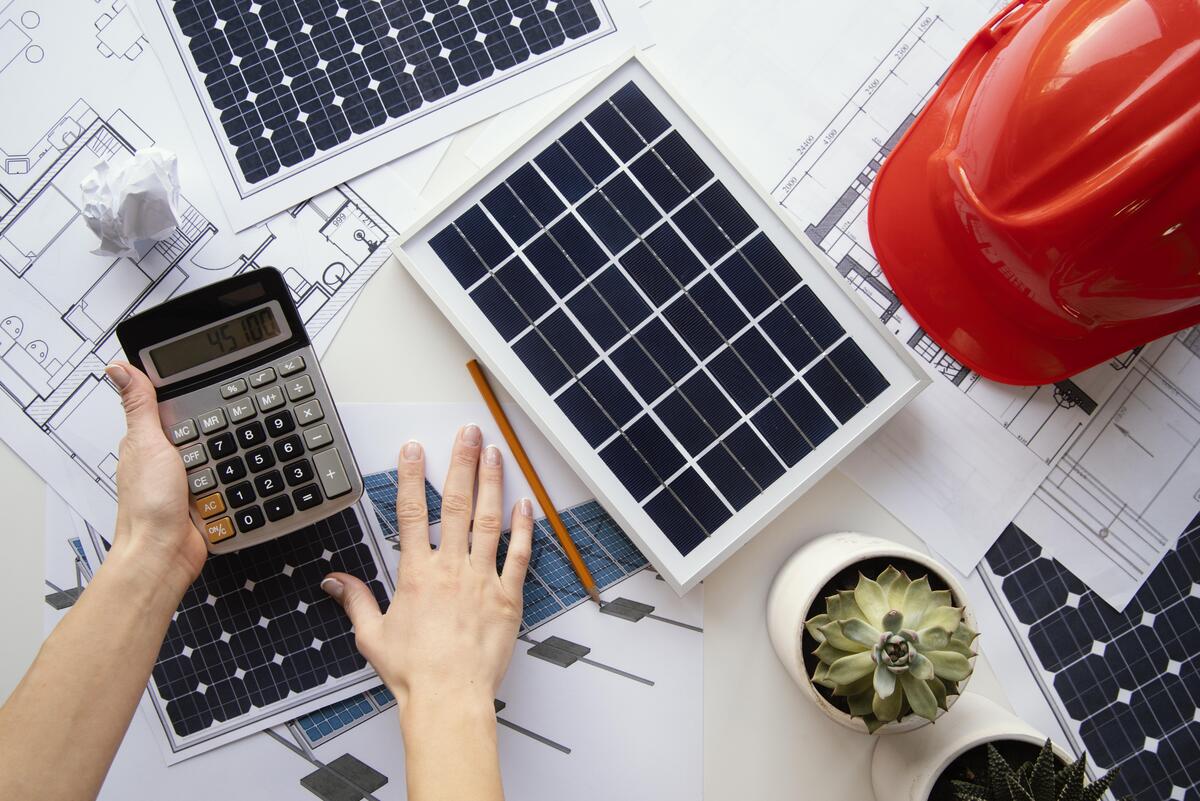
Energy Monitoring and Building Controls
Nearly half of the energy used in the United States is consumed by commercial buildings, at a cost of more than $300 billion annually. Through inefficiencies, a large portion of that energy is lost, which contributes to enormous and wasteful greenhouse gas emissions. A comprehensive Building Energy Management technique can be used to reduce energy waste and save electricity costs.
A useful instrument for integrated real-time monitoring and control of a variety of energy-related devices is a building energy management system (BEMS). Sustainability, performance, comfort, and cost savings are advanced by an energy management system for buildings that is well-designed.
Benefits of Energy Monitoring
- Energy Managers can proactively monitor consumption spikes, lower base loads, assess peak hours, spot abnormalities, optimize operational scheduling, and more precisely track energy-saving targets and goals by employing real-time energy data and software.
- The Carbon Trust estimates that the usage of inefficient equipment wastes about 20% of all yearly commercial energy costs.
- Real-time energy monitoring is more efficient than delayed monitoring. Businesses may continuously monitor elements of their facilities, such as HVAC systems and lighting, with the help of effective energy monitoring.
- Businesses will be able to conserve energy and lower energy expenses if they are diligent about monitoring energy usage and fixing abnormalities that lead to waste.
- Real-time energy data increases knowledge of energy usage and consumption. By encouraging staff to reduce their spending and consumption, it may help increase employee commitment to corporate sustainability goals.
Building Energy Management and Control Strategies
Building Energy Management and Control Strategies are essential for minimizing operational expenses, increasing occupant comfort, and optimizing energy consumption. These methods use cutting-edge technologies to monitor and control HVAC, lighting, and other systems, including smart sensors, data analytics, and machine learning.
These systems can efficiently schedule equipment operations, implement demand response, and dynamically alter settings by evaluating real-time data. The ability of technology and strategy to work together for sustainable building operations in the face of escalating energy demands is shown by this synergy.
Occupant Engagement and Behavior-Based Energy Conservation
Sustainable building operations depend heavily on occupant involvement and behavior-based energy conservation. Through awareness campaigns, interactive technologies, and community involvement, occupant engagement entails teaching and inspiring building occupants to adopt energy-efficient behaviors.
Significant energy savings can be achieved by influencing occupant behavior, like regulating temperatures, shutting off lights, and maximizing equipment usage. By taking into account the human component, this strategy maximizes the impact of energy-efficient devices. Buildings may efficiently cut their energy use through active participation, helping to create a future that is greener and more environmentally conscious.
Artificial Intelligence (AI) and Machine Learning Applications in ZEBs
Zero Energy Buildings (ZEBs) have undergone a revolution thanks to artificial intelligence (AI) and machine learning, which have improved their sustainability and efficiency. AI optimizes energy use by examining occupancy trends and weather predictions using predictive analytics. As environmental conditions change, heating, cooling, and lighting systems are adjusted with machine learning algorithms.
Real-time modifications are possible with AI-driven smart controls, cutting down on waste and expense. initiatives like Microsoft’s “Project Natick” underwater data centers, which use AI to accomplish zero-energy building goals, are examples of initiatives showcasing these technologies.
Suggested article’s for reading: AI in Construction | Machine Learning in Construction
Smart Meters and Energy Data Analytics
By giving real-time consumption data, smart meters change energy monitoring by facilitating effective resource management and cost reduction. These tools enable both consumers and utilities to make knowledgeable judgments by remotely transmitting precise usage data.
Energy Data Analytics improves this system by analyzing the massive amounts of information gathered, drawing conclusions, and forecasting usage trends. Demand response, load forecasting, and finding opportunities for energy savings are all aided by this synergy.
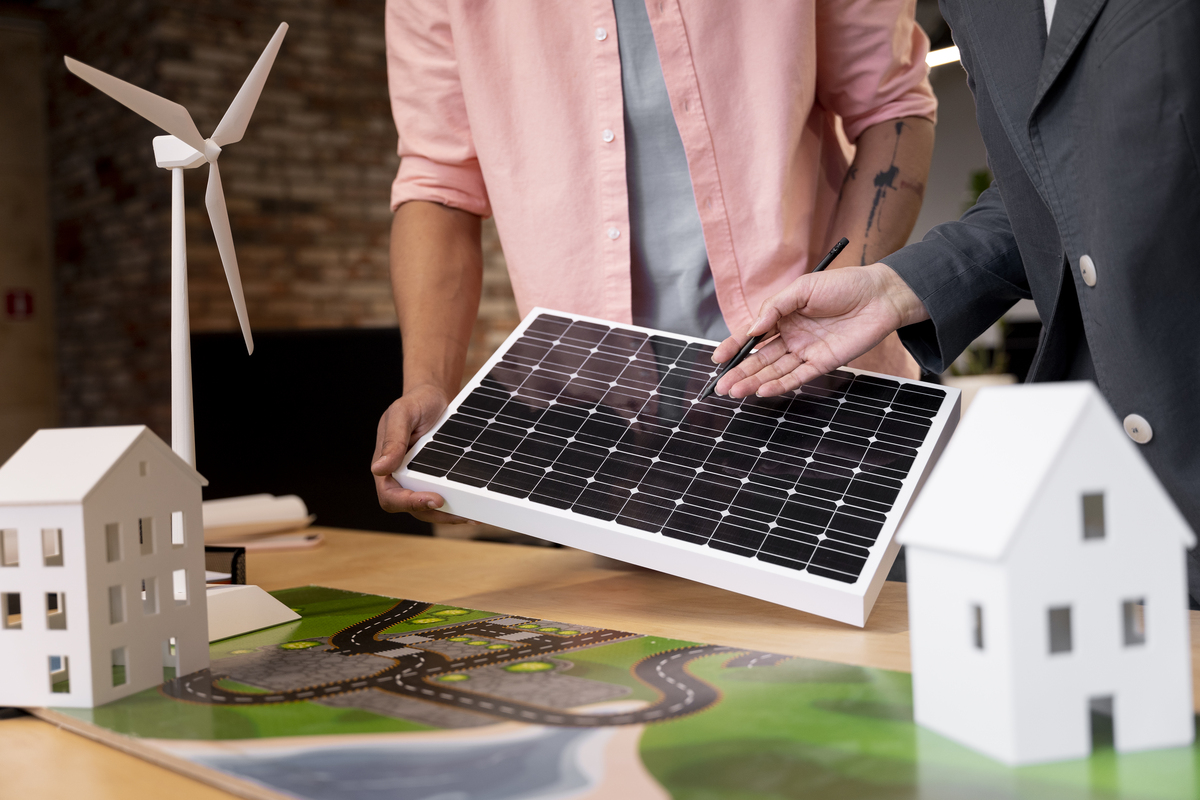
Case Studies of Zero Energy Buildings
The building sector has shifted its focus to creative ways to lower energy use and carbon emissions as the world’s concern over environmental sustainability grows. Zero Energy Buildings (ZEBs) have become a model for environmentally friendly construction, demonstrating how it is possible to build buildings that generate as much energy as they need. Let’s check out a number of case studies of Zero Energy Buildings from around the globe, highlighting the design principles, technology used, and the advantages they provide in terms of both the environment and the economy.
Showcase successful ZEB projects from around the world
The Bullitt Center: This building was finished in 2013, and is a noteworthy illustration of sustainable architecture in the context of commercial buildings. It is a six-story office building with the goal of being a “living building” that produces more energy than it requires. The design of the structure incorporates a thorough energy plan, including a photovoltaic array that covers the entire rooftop, rainwater collection systems, and a high-performance envelope with effective insulation. Additionally helping to conserve water are its cutting-edge composting toilets and water filtering system.
Beddington Zero Energy Development (BedZED), London, UK: BedZED, a famous eco-village with 100 homes and offices, is situated in the London borough of Sutton. It was among the first significant zero-energy building projects in the UK when it was finished in 2002. The construction uses sustainable materials, natural ventilation, and passive solar design. Residents are urged to adjust their habits and use energy-efficient appliances to lower their energy usage. The significant energy surplus of BedZED is a result of a variety of renewable energy sources, including biomass boilers, solar panels, and wind turbines.
Richardsville Elementary School, Kentucky, USA: The zero-energy building idea has been accepted by educational institutions as well, as seen by Richardsville Elementary School. It was the first school in the US to receive ZEB certification when it opened in 2010. Geothermal heating and cooling, solar panels, energy-efficient lighting, and improved insulation all contribute to the school’s energy efficiency. pupils can learn about sustainability through interactive exhibits that illustrate the building’s energy output and consumption in real time. This building acts as an educational tool for pupils.
Clichy-Batignolles Urban District, Paris, France: The district of Clichy-Batignolles in Paris serves as a larger-scale example of the viability of district-level sustainability. It includes a number of zero energy buildings, such as apartment complexes and office buildings, all connected by a common renewable energy infrastructure. The district, which was built in stages beginning in 2012, is a demonstration of group energy strategies like centralized biomass heating, solar panels, and energy storage devices. Infrastructure for recharging electric vehicles is being integrated to further advance green mobility.
PNC Tower, Pittsburgh, USA: The zero energy buildings’ achievements in the commercial skyscraper industry are demonstrated by the 2015 completion of the PNC Tower in Pittsburgh. An innovative building energy management system, double-skin facades for insulation, underfloor air distribution systems for effective ventilation, and other sustainable technology are all used in this 33-story office structure. With its LEED Platinum and Living Building Challenge certifications, the tower demonstrated its dedication to sustainability.
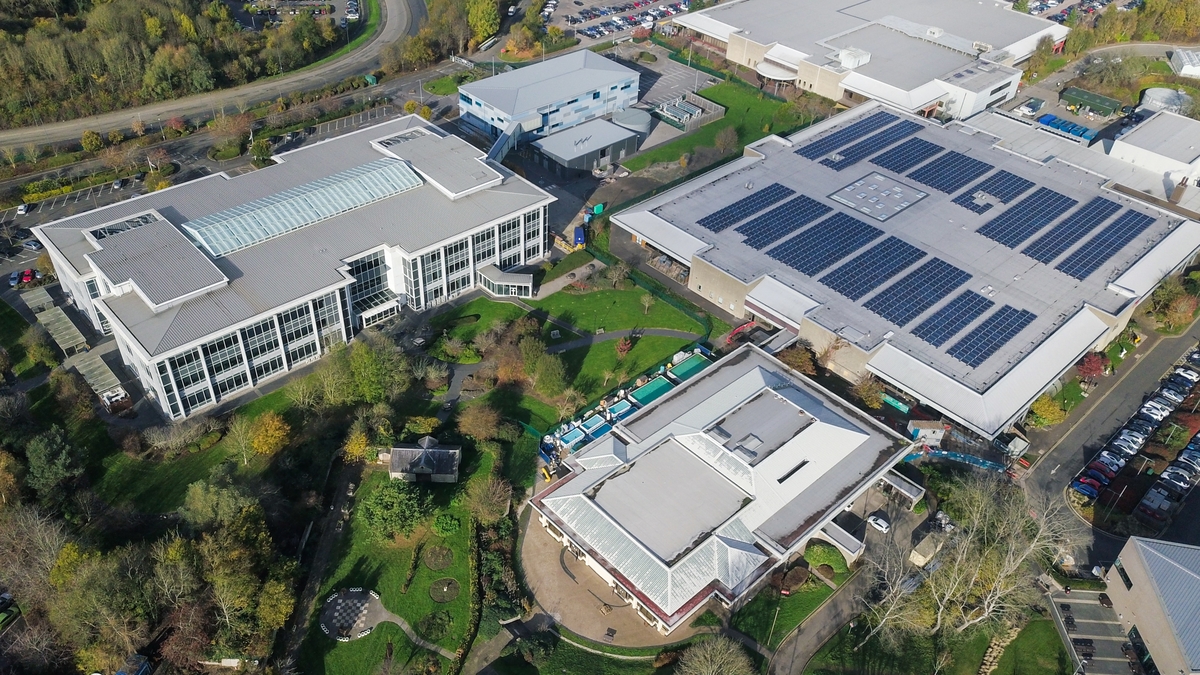
Financial Incentives and Policy Support
The construction and operation of buildings have come under attention for their significant energy consumption and environmental impact as the world’s focus on sustainability grows. As a result, governments all over the world are putting in place a variety of monetary incentives and policy support mechanisms to encourage the adoption of Zero Energy Buildings (ZEBs), which mark a substantial advancement toward reaching energy efficiency and carbon neutrality targets.
These incentives are meant to promote the development and refurbishment of structures that produce as much energy as they need annually. With an emphasis on the financial and environmental advantages of adopting zero energy buildings, this article will examine the numerous ways that the government supports zero energy buildings, including subsidies, tax credits, green building certifications, zoning laws, and building codes.
Government Incentives and Subsidies for ZEBs
Governments all over the world understand how important it is to switch to more environmentally friendly building techniques, and many of them provide direct incentives and subsidies to encourage the adoption of zero energy buildings. Grants, subsidies, low-interest loans, and funding plans specifically designed for ZEB projects are some examples of these inducements.
For instance, the Building Technologies Office of the Department of Energy (DOE) in the US offers financial support for the investigation and development of energy-efficient building technologies, including those connected to zero energy buildings. Similarly to this, as part of their commitment to lowering carbon emissions, European Union member states frequently provide incentives to assist in the building of zero energy buildings.
Tax Credits and Rebates for Energy-Efficient Buildings
Governments employ tax credits and rebates as effective tools to encourage the use of energy-efficient building techniques. Building owners and developers will find the initial investment more alluring thanks to these methods, which significantly lessen the financial burden of implementing energy-efficient systems.
For instance, the Australian government provides tax breaks to building owners who spend money on energy-saving tools and methods, thus promoting zero energy buildings. For the installation of renewable energy systems and energy-saving equipment in residential and commercial buildings, the US federal government offers tax incentives.
Green Building Certifications and Their Benefits
Zero-energy building uptake is greatly aided by green building certifications like LEED (Leadership in Energy and Environmental Design) and BREEAM (Building Research Establishment Environmental Assessment Method). These certifications offer uniform criteria for evaluating a building’s environmental performance and promote the application of sustainable design concepts. Developers have a significant motivation to pursue ZEB features since buildings that satisfy the requirements for these certificates frequently earn acknowledgment, marketing advantages, and preferential treatment from local authorities.
Suggested article’s for reading: Green Architecture Projects
Zoning Regulations and Building Codes Promoting ZEBs
Building rules and zoning restrictions are crucial tools for influencing the built environment. They can significantly affect the construction sector when created to encourage the adoption of zero energy buildings and energy efficiency. The incorporation of renewable energy sources and other ZEB-related requirements can be mandated by governments in construction codes. ZEBs have been developed, for instance, as a result of zoning restrictions that the Canadian city of Vancouver established that mandate new residential construction meet certain energy efficiency standards.
Economic and Environmental Benefits of ZEB Adoption
These incentives and regulations are justified because the adoption of ZEBs brings about a number of economic and environmental advantages. Economically speaking, ZEBs can result in lower energy costs for residents because they require fewer external energy sources. Furthermore, the rising demand for energy-efficient solutions can foster innovation and open up new business opportunities in industries like renewable energy, technology, and building.
By reducing the dependency on fossil fuels for building operations, ZEBs make a substantial environmental contribution to carbon reduction initiatives. Reduced greenhouse gas emissions, better air quality, and a smaller carbon footprint are the results of this. The creation and maintenance of ZEBs can also act as role models for sustainable development, encouraging the general public to adopt greener lifestyles.
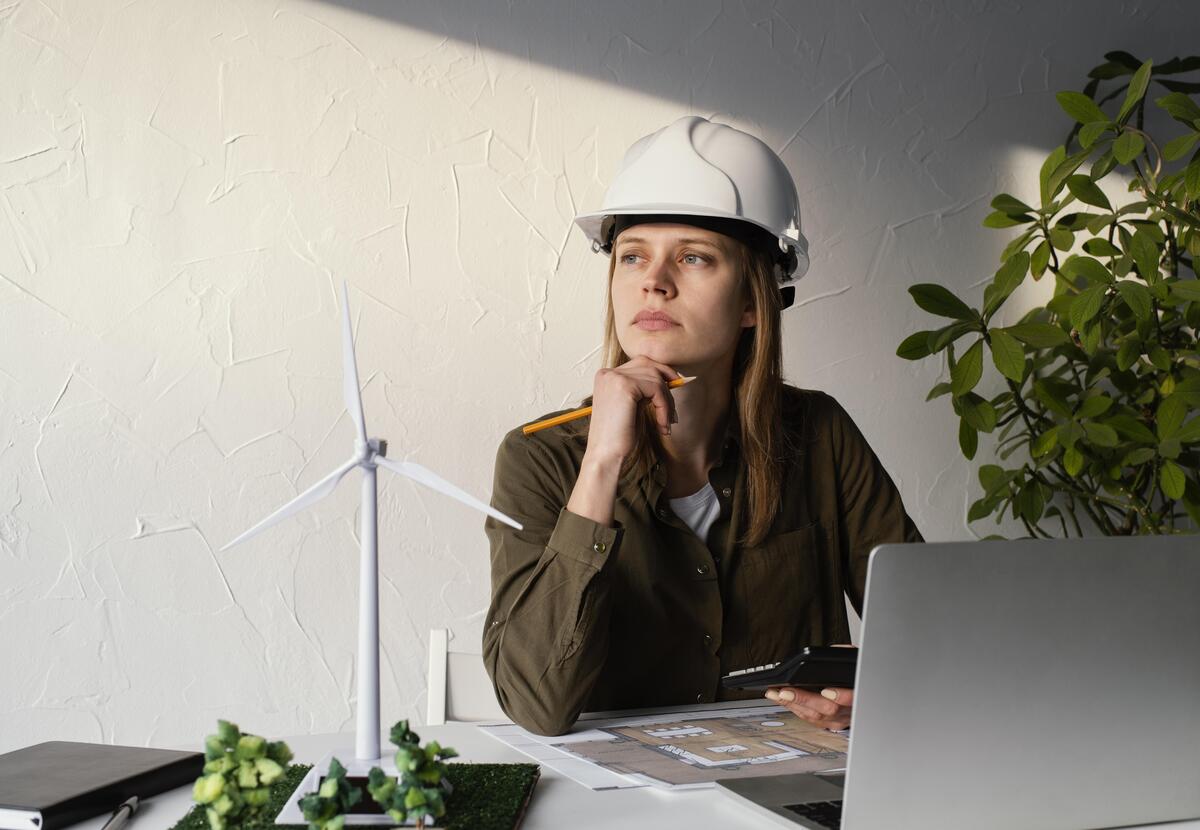
Challenges and Future Prospects
The idea of Zero Energy Buildings (ZEBs) has acquired a lot of popularity in the quest for sustainable development and the mitigation of climate change’s effects. ZEBs, also known as Net Zero Energy Buildings, are constructed to create a harmonious balance between energy production from renewable sources and energy consumption, producing a net energy balance of zero.
ZEBs have the potential to significantly reduce greenhouse gas emissions and energy use in the built environment, but they also have a number of issues that need to be resolved before they can be widely adopted. However, creative approaches are being used to overcome these difficulties, and the future of energy-efficient buildings is looking bright.
Technical Challenges in Achieving ZEB Status
The technological issue of maximizing energy efficiency without sacrificing passenger comfort is one of the main obstacles to becoming a zero-energy building. It’s crucial to strike a balance between high insulation levels, airtightness, and adequate ventilation because too much insulation might affect indoor air quality.
Additionally, to achieve optimal energy acquisition, site-specific characteristics like solar direction and shading must be carefully taken into account when integrating renewable energy sources like solar panels. Innovative technologies are being created to address these issues and enhance the overall energy performance of zero energy buildings, including enhanced building envelope materials, energy-efficient HVAC systems, and smart energy management systems.
Economic Barriers and Initial Investment Costs
Economic obstacles to the shift to zero energy buildings include greater upfront expenditures related to energy-efficient technologies and renewable energy systems. ZEBs may require larger initial investments than traditional structures, which discourages some developers and financiers. However, studies have indicated that ZEBs may have lower lifecycle costs over time due to declining energy costs.
Governments and organizations are increasingly providing subsidies, grants, and incentives to help offset the initial cost of investing in zero energy buildings and promote their adoption. The cost disparity is anticipated to decrease as technology advances and economies of scale are gained.
Technological Advancements and Upcoming Trends
Technology development is essential for overcoming ZEB issues. Zero energy buildings are becoming more practical and effective thanks to quick advancements in renewable energy, building automation, and materials science. Solar panels can be smoothly integrated into the building envelope thanks to a technology called building-integrated photovoltaics (BIPV), which maximizes energy production without sacrificing aesthetics.
Additionally, as Internet of Things (IoT) devices and sensors proliferate, building systems can be monitored in real-time and adaptively controlled to consume the least amount of energy possible based on occupancy patterns and environmental factors.
Potential for Scaling Zero Energy Buildings and Their Impact on the Energy Landscape
Zero energy buildings are now a niche idea, but they have a lot of potential for growth. The demand for energy-efficient buildings is anticipated to increase as governments throughout the world enforce more stringent energy codes and environmental restrictions. This change has the potential to hasten the deployment of zero energy buildings and spark innovation within the building sector. Additionally, the spread of zero energy buildings may result in a significant decrease in greenhouse gas emissions, aiding in efforts to fight climate change and develop a more sustainable energy system.
Conclusion
With the release of the full handbook on Zero Energy Buildings (ZEBs), the year 2024 will represent a crucial turning point in the effort to build in a sustainable and energy-efficient manner. The concepts, technology, and practices that support the idea of zero energy buildings have been described in this handbook, illuminating the way to a greener and more sustainable future. It has never been more important to make the switch to zero energy buildings from conventional buildings as global worries about climate change and resource depletion grow.
The complex character of zero energy buildings, from their design and construction to their operational phase, has been made clear to readers through this guide. Zero energy buildings have shown their ability to significantly lower energy consumption, greenhouse gas emissions, and operational costs by adopting cutting-edge techniques including enhanced insulation, passive solar design, energy-efficient HVAC systems, and integrated renewable energy sources. The viability and usefulness of zero energy buildings in the contemporary built environment have been further shown by the integration of smart technology, energy monitoring systems, and sustainable materials.
Resources:
U.S. Department of Energy | International Energy Agency (IEA) | A Common Definition for Zero Energy Buildings | IPCC | World Green Building Council | International Energy Agency | United Nations Environment Programme | Energy.Gov | Plastic Pipe Institute | Medium | Green Home | Buildings IoT | Business Wise Solutions | European Commission | Australian Government | BREEAM | US Green Building |
Journal articles:
- Abrahamse, W., Steg, L., Vlek, C., & Rothengatter, T. (2005). A review of intervention studies aimed at household energy conservation. Journal of Environmental Psychology, 25(3), 273-291.
- Apolônio Callejas, The influence of climate change on renewable energy systems designed to achieve zero energy buildings in the present: A case study in the Brazilian Savannah, Sustainable Cities and Society, Volume 52, 2020, 101843, ISSN 2210-6707, https://doi.org/10.1016/j.scs.2019.101843.
- Balouktsi, M., & Chalvatzis, K. J. (2016). Challenges for achieving zero-energy buildings: A review of building energy regulations and policy measures for the Mediterranean region. Renewable and Sustainable Energy Reviews, 56, 1002-1015.
- Emeli Lalesca Aparecida da Guarda, Renata Mansuelo Alves Domingos, Stefany Hoffmann Martins Jorge, Luciane Cleonice Durante, João Carlos Machado Sanches, Marlon Leão, Ivan Julio.
- Hargreaves, T., Nye, M., & Burgess, J. (2013). Keeping energy visible? Exploring how householders interact with feedback from smart energy monitors in the longer term. Energy Policy, 52, 126-134.
- Häuplik-Meusburger, S., & Mitterhofer, H. (Eds.). (2020). Building from Waste: Recovered Materials in Architecture and Construction. Springer.International Energy Agency (IEA). (2020). Net Zero by 2050: A Roadmap for the Global Energy Sector. IEA Publications.
- Jin, Wenping, et al. “Thermal performance of vacuum insulation panels (VIPs) in building applications: A review.” Energy and Buildings 134 (2017): 100-117.
- Kim, J., Kim, J., & Koo, C. (2021). A comprehensive review of zero energy building definitions, concepts, and requirements. Sustainable Cities and Society, 74, 103205.
- Pless, S. (2018). A critical review of twenty-first-century net zero energy buildings in the United States. Energy and Buildings, 177, 77-88.
- Rezaei, Davood, et al. “Passive cooling technologies in building design, a review of methodologies.” Renewable and Sustainable Energy Reviews 32 (2014): 708-721.
- Sartori, Igor, and Renata Giovannini. “Definition of a simulation procedure for the evaluation of the energy performance of building refurbishment.” Energy and Buildings 39.2 (2007): 143-147.
- Wong, N. H., et al. “Simulation-based design guidelines for zero energy office buildings in Singapore.” Applied Energy 95 (2012): 103-113.
For all the pictures: Freepik



